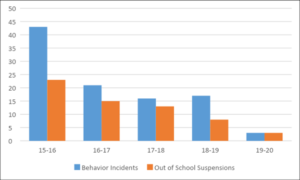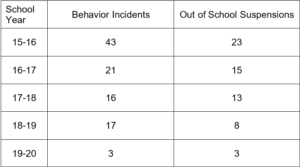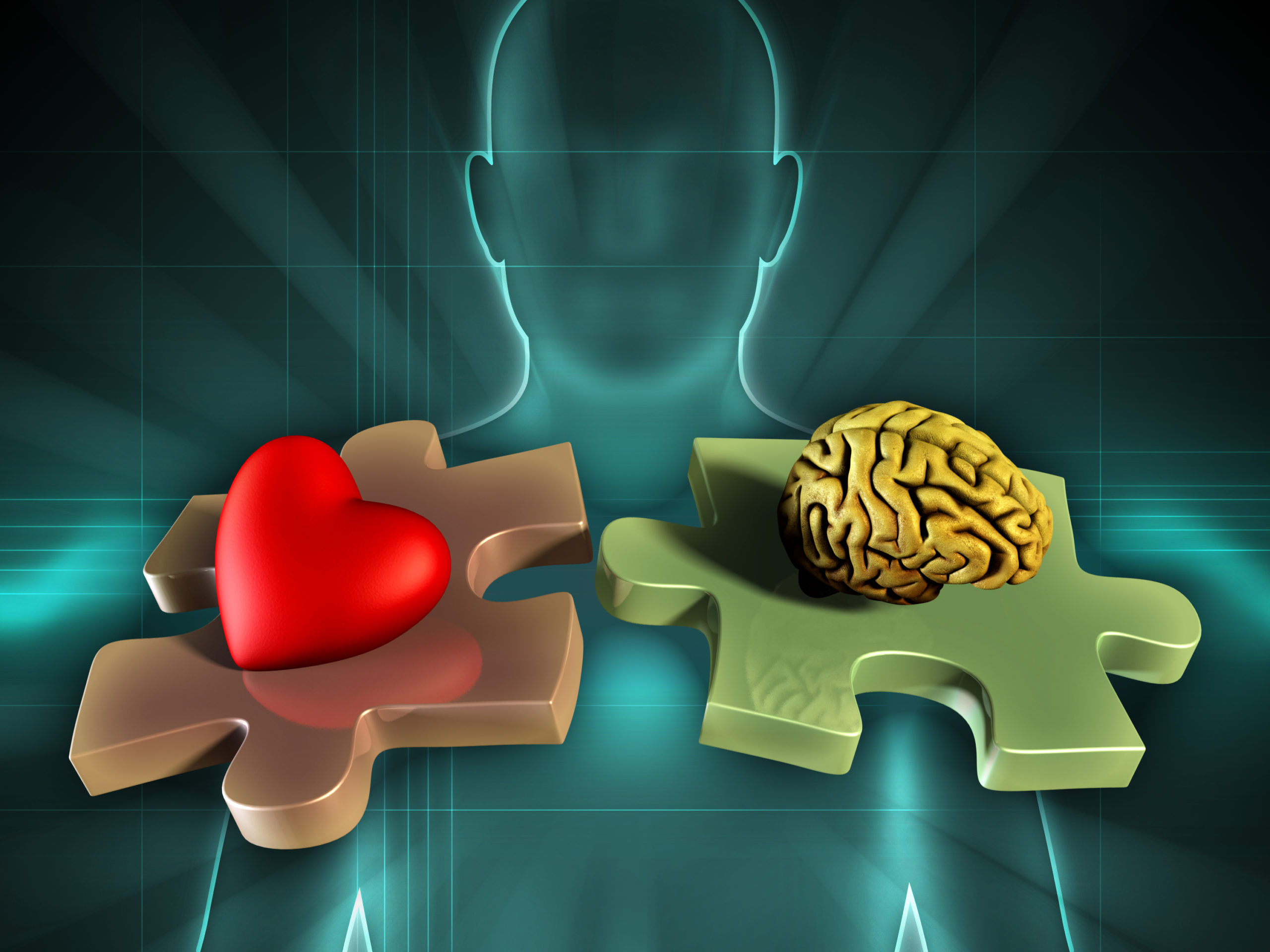By Tom McSheehy MSW, LSW
I have been involved with education and social emotional learning (SEL) for past 37 years. I taught elementary and middle school for 21 years, and I also have been a social worker and family therapist for the past 27 years. Along with being a teacher and social worker, I have been doing SEL presentations and workshops for teachers and parents and promoting SEL for the last 26 years.
Over those years, I have learned what works and what doesn’t in terms of SEL in schools. There is high probability that any SEL school program will plateau or fail after a few years.
There are five essential ingredients required for any social emotional learning program to succeed. Here are those essential ingredients.
1) Principal Support
Principals must value SEL and fully support it by making time for daily SEL lessons and for ongoing SEL teacher professional development.
I have talked to so many principals that talk a good game and are concerned about the mental health of their students, but they won’t make time in the daily instructional schedule for teachers to do SEL lessons. I have talked to principals who have students going to the emergency room because of thoughts of suicide, and they want to do something, but they don’t won’t commit time to do SEL lessons.
Principals don’t understand how SEL can help students to focus better and learn with efficiency and productivity. SEL actually increases academic performance. Educators know that students learn best through daily practice and repetition, and this is how skills get wired in our brains for long term storage. That is why reading, writing, and math are taught on a daily basis. Learning SEL is no different than learning academic subjects.
2) SEL Curriculum With Brief, Daily Lessons That Are Brain Based
The second critical ingredient of a successful SEL program is a curriculum that has quick, daily lessons that are brain based. Over my 26 years of promoting SEL, I noticed that good SEL curriculums were sitting unused on the shelves of teachers. In 2001, my school district invested a lot of money in the most popular SEL curriculum, and it just sat on the shelves of most teachers. I continued to hear that same story over the next nine years from teachers around the country.
I learned that an SEL curriculum has to have lessons that are quick and easy and can easily fit into a teacher’s daily schedule. Teachers are overwhelmed with many demands on their time, and they need an SEL curriculum that has lessons which are only 10-15 minutes per day and which can easily be integrated in all academic subjects. Many curriculums have longer lessons that schools do once a week or once every two weeks. That is not enough time to practice SEL skills so they become habits.
After years of promoting SEL and promoting other curriculums, and watching good curriculums sitting unused on teachers’ shelves, I decided to write my own curriculum that addressed all the reasons that other curriculums were not being used as frequently as needed or were roadblocks for teachers ever using the curriculums.
My unique curriculum is called In Focus: Improving Social Emotional Learning, One Day at a Time, and teachers are loving its simplicity and ease of use and how effective it is in developing social emotional intelligence in just minutes a day.
In Focus is a brain-based approach to teaching SEL skills. Technology and brain research have given us incredible information about how the brain works and what it needs to succeed. This research is showing educators that the lower levels of the brain have a profound influence on the functioning of the highest level of the brain, the cortex, where thinking and learning take place.
Schools often teach in an upside-down manner. They focus all their time on the cortex and neglect the needs and the development of the lower levels of the brain. Sensations and emotions (fear, sadness, anger, hurt) originate in the lower levels of the brain and are the main causes of misbehavior and lack of focus in a classroom.
The lower levels (brain stem = safety, limbic system = emotions) drive attention and motivation. If students learn to manage the lower levels of their brains, they will be less distracted and more focused on learning.
A lot of learning and teaching in schools is out of sync with how the brain works. In Focus provides quick, daily lessons with engaging activities that progress from the lower levels of the brain to the highest level of the brain.
Joseph Durlak, professor of psychology at Loyola University, and a team of researchers, studied the effectiveness of 213 SEL school-based programs, covering 270,034 students in kindergarten through 12th grade. From that research, they created the acronym SAFE to highlight the four elements of an effective SEL program. See study.
- Sequenced: connected and coordinated sets of activities to foster skills development
- Active: active forms of learning to help students master new skills
- Focused: emphasis on developing personal and social skills
- Explicit: targeting specific social and emotional skills
These four elements are the foundation of my In Focus social emotional learning curriculum, and they have made it highly effective. Evidence-based research on the effectiveness of In Focus was conducted in 2017/18. This year long research was conducted at Eberhart Elementary (Chicago Public Schools) and Timberline K-8 (Longmont, CO). Both schools are 90% low-income. Along with increase in academic performance, here are other research findings:
Schools using In Focus have reported:
- 82% reduction in fighting
- 67% reduction in harassment and offensive language
- 54% reduction in behavior referrals to the office
- 33% reduction in bullying
- 55% increase in attendance
Implementing SEL curriculums can actually save time, because teachers have to deal with fewer behavioral problems (New York City-based policy-research group Public Agenda discovered that teachers reported losing as much as 30 percent of instructional time to deal with behavior problems in class).
East Elementary School in Littleton, Colorado, gathered data on the effectiveness of the In Focus SEL curriculum in reducing behavior referrals and school suspensions over a five year period. Here is their data:
East Elementary was doing such innovative activities to reduce the anxiety of their students using both the In Focus SEL curriculum and heart monitors that they were featured on NBC’s Today Show. ( Story).


Youth suffering from emotional wounds and developmental trauma often act out their pain through bullying, drug use, addictions, abuse, violence, and suicide; or internalize their pain with depression or anxiety.
Social emotional learning (SEL) and In Focus equips youth with the necessary skills to be able to deal with the root causes of their pain / trauma in healthy and effective ways.
3) Designated Daily Time – 10 to 15 Minutes Each Day
The third critical element of a successful SEL program is a daily, scheduled time to do an SEL lesson. Students learn through consistent repetition and practice. This is the reason that schools teach reading, writing, and math on a daily basis. If we taught these important academic subjects only once a week, students would not be able to develop strong reading, writing, and math skills.
I often talk to schools who are very concerned about the mental health of their students and about various social emotional issues, but they won’t allocate 15 minutes a day for SEL. The values of schools and their leaders aren’t in sync with what research is saying about how to optimize the brain and nervous system and how to use SEL to positively impact academic performance, behavior issues, and mental health issues.
Teachers see that principals and administrators won’t commit time each day for SEL, and this lack of commitment speaks volumes to teachers that SEL isn’t that important.
Take a look at the main SEL abilities which directly impact brain and nervous function and directly affect academic performance.
SEL is the ability to…
- identify and manage feelings & sensations
- calm oneself when upset and stressed
- control impulses, delay gratification
- persevere when things get difficult
- communicate and relate effectively to others
- express empathy toward others
- work cooperatively with others
- negotiate and resolves differences in a win/win manner.
When teachers and administrators integrate SEL into the curriculum, research shows that students’ social skills grow, they are more able to develop and maintain healthy relationships, and school culture improves.
These abilities allow students to sit still, focus, and learn in an efficient and optimal way. My experience with SEL in education over the last 26 years has shown me that a lot of schools and teachers believe that teaching SEL once a week is enough. This is not true based on research. It is more effective to practice skills for shorter amounts of time more frequently instead of longer amounts of time less frequently. Shorter, focused SEL lessons taught on a daily basis are more effective.
I learned from 21 years of classroom teaching and my 26 years of SEL work with schools that teachers are overwhelmed, and they need an SEL curriculum that is easy, quick, and consistent. The In Focus Curriculum takes only 10-15 minutes a day, and then the skills can be integrated into all academic subjects.
4) Ongoing SEL Training and Support For Staff
An SEL curriculum is very important as a roadmap and guide through the SEL state goals and standards and through the 3 levels of the social emotional brain, but it isn’t the most important aspect of a successful SEL program. The most important aspect of any SEL program is the teacher.
An SEL curriculum needs to support teachers in developing their own social emotional intelligence. The In Focus SEL curriculum has a daily self-reflection question for teachers which is a perfect prompt for journaling. Self-reflection is the most important SEL activity because it builds self-awareness which is the foundation of SEL.
Most teachers didn’t grow up with SEL in schools which they attended when they were young, and teacher education programs haven’t offered SEL training classes or information about the brain and nervous system.
The most important SEL teacher quality is vulnerability. Teachers need to be able to be real and authentic related to themselves and SEL. This can be scary for teachers. SEL is quite different from teaching academic subjects because SEL is a very personal subject to teach and model. It also can be scary to feel emotions and sensations because there are so many stigmatizing societal beliefs about mental health and emotions which can inhibit teachers from feeling emotions and sharing them.
In Focus and my SEL teacher trainings support teachers in being vulnerable and authentic and learning to model authenticity throughout the school day. In Focus also supports teachers in integrating the daily SEL skills in academic teaching.
It is critical to provide ongoing SEL teacher professional learning and development if a SEL program is going to grow and succeed in schools.
5) SEL Curriculum That Provides Parent Resources
It is vital to build a SEL bridge between school and home. When teachers and parents are working together to teach and model SEL with vulnerability and authenticity at school and home, students will learn and grow exponentially in developing their social emotional intelligence.
Like teachers, parents are extremely busy and SEL support has to be easy and quick to read and integrate into their daily lives. The In Focus SEL curriculum has online parent resources that provide daily information about what SEL skill was learned in school that day and what they can do at home to practice that skill with their children.
Along with providing an idea for practicing the SEL skill at home, the In Focus SEL parent resource also encourages parents to develop their own social emotional intelligence with a daily self-reflection question.





